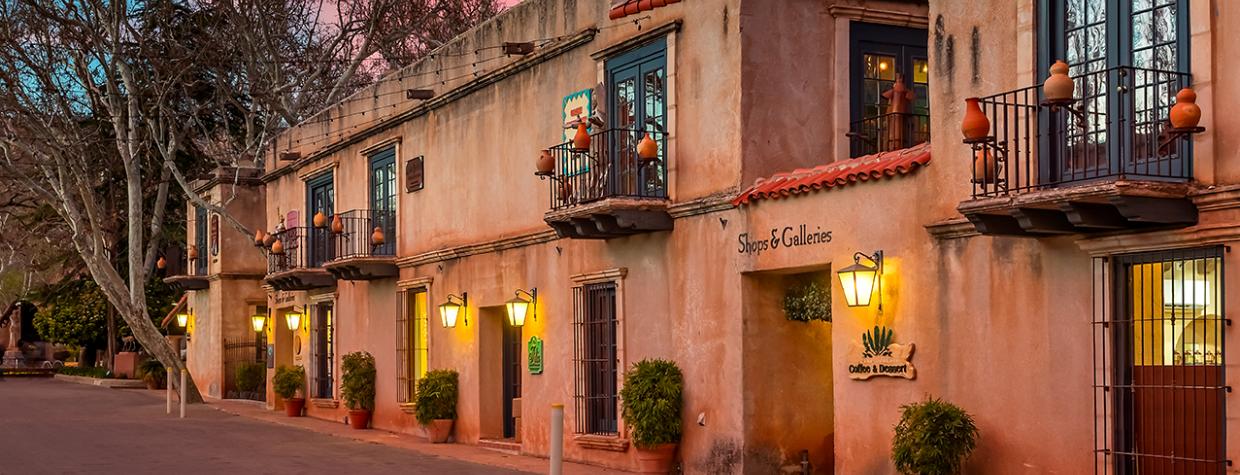Architecture is more than artful shelter. Architecture is culture, one of the most fundamental ways we express who we are. Architecture is our history, our mythology and our aspirations, all gathered up and mortared into physical presence. If it’s sometimes contradictory or confusing, well, how could it not be? Where is there a people in the 21st century whose culture is uncomplicated?
The long-running parade of “Spanish” architecture in Arizona is our quest for a cultural identity, and, yes, it’s confusing. And, in some quarters, controversial. Despite its ubiquity, most architects in Arizona today avoid it. Many critics disdain it. I was one of them. When I worked as an architecture critic for Tucson and Phoenix newspapers in the 1980s and ’90s, I thought it the architectural equivalent of pulp fiction and labeled the late 20th century version of it “Taco Deco.”
After living away from Arizona for more than 20 years, I returned to see if it felt any different.
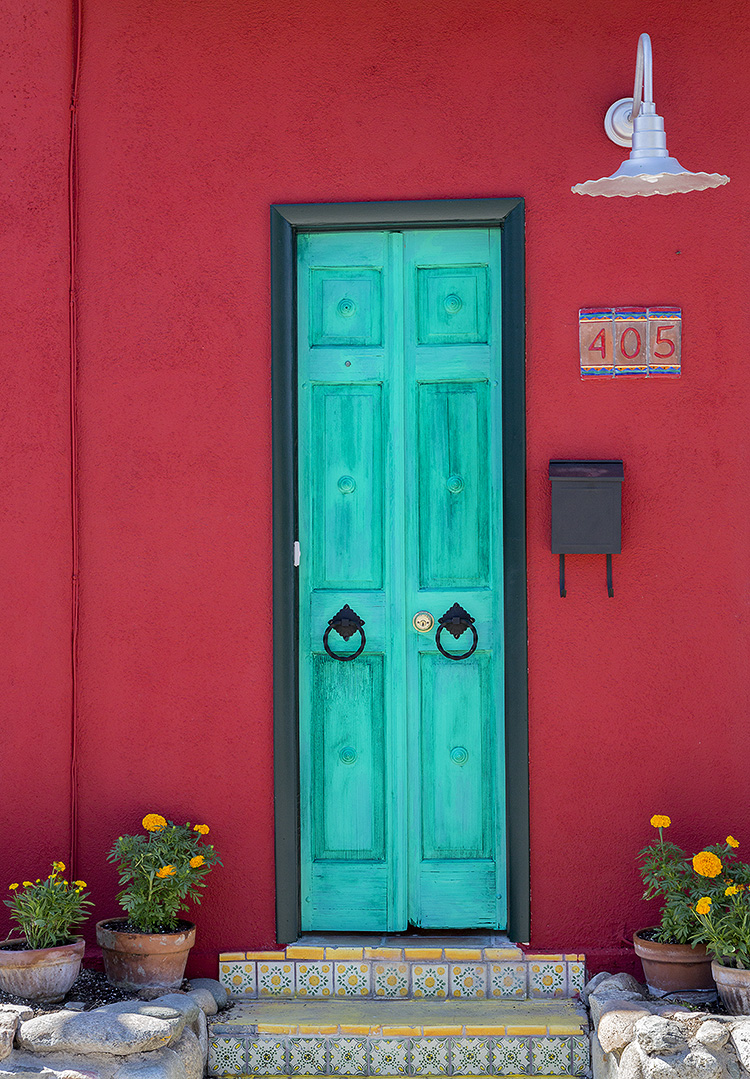
The original Spanish-derived architecture of Arizona was plenty authentic. We can savor it in the ruin of Mission San José de Tumacácori, the Baroque exuberance of Mission San Xavier del Bac and the late 19th century adobe row houses still standing in Tucson’s Barrio Historico and Presidio neighborhoods. But the railroad that punched into Arizona in the 1870s and ’80s delivered the building materials and aesthetic predilections of Anglo America. Adobe was suddenly scorned, and the faddish costume party of the time — Italianate Victorian, Greek Revival, Tudor Revival — was ascendant. For a couple of decades, Arizonans busily worked to build American-looking town centers and neighborhoods.
But then a funny thing happened, illustrating how architecture doesn’t only grow from culture — it can be employed to mold a culture. In 1893, Chicago threw a world’s fair dubbed the World’s Columbian Exposition. Most of the buildings wore stoic, Neoclassical dress, but flaky California showed up with a building inspired by its Spanish missions. That one building sparked an architectural stampede in the West, which had been aching for a way to declare independence from the East Coast design establishment.
A young architect named Henry Trost, who had been a draftsman in Chicago at the time of the exposition, became the pipeline to Arizona. He moved to Tucson in 1899 and almost immediately won a design commission for the Owls Club on Main Street. The building he designed, now known as the Steinfeld Mansion, adroitly bridged the Mission Revival style, with its scalloped parapet and thematic arches, to the then-modern geometric ornamentation of Chicago’s Louis Sullivan. Soon, many modest homes, churches and even a Tucson cow barn strutted Mission dress.
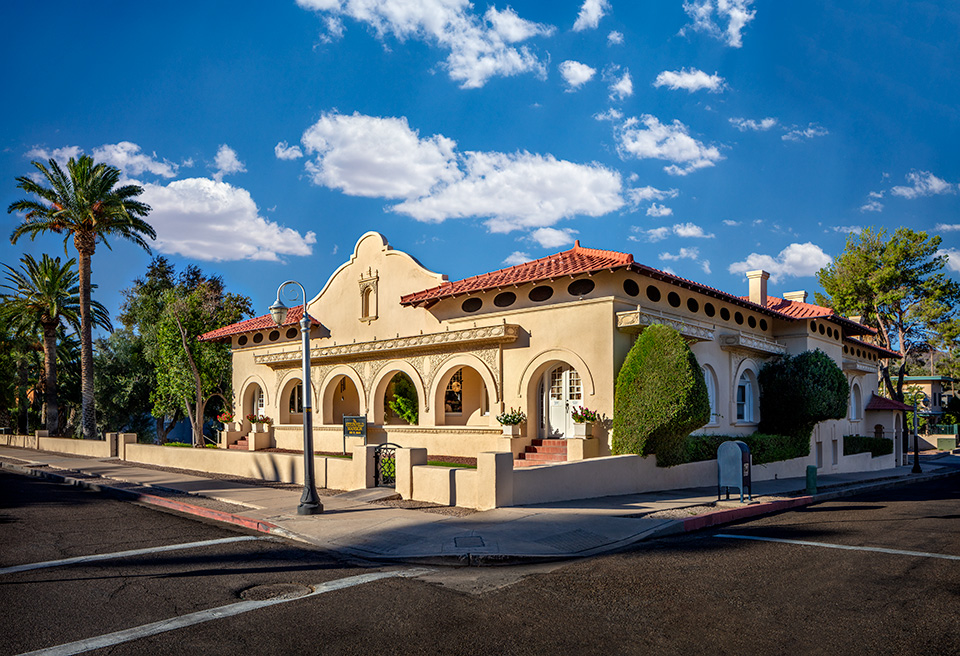
A second, even more influential wave of Spanish-inspired architecture rolled out in 1915 from the Panama-California Exhibition in San Diego. The Spanish Colonial Revival was more flamboyant, more lavishly decorated and more wildly exotic than its predecessor. The translations that materialized in Arizona were fortunately more restrained than the California models, and they now are some of the state’s most cherished buildings: the Ajo town center of 1926, Phoenix’s Brophy College Preparatory of 1928 and Tucson’s Pima County Courthouse of 1928. A Swiss-born architect in Tucson, Josias T. Joesler, synthesized the two revivals into one with Saint Philip’s in the Hills Episcopal Church in 1936. Although Joesler couldn’t have intended it, the church’s high, flat, starkly unadorned facade almost appears postmodern. It seems like a nexus linking different eras, places and cultures. It’s also quite beautiful.
The revivals flamed out in the building boom after World War II, when modernism took root in Arizona, as everywhere. Romanticism, ornamentation and historical references became high crimes in architecture, and Arizona cities began to look like cities anywhere. Which was a problem. Not only did glass boxes fail to consider Arizona’s climate, they also said nothing about cultural heritage — and the people flocking into this strange, young, still-malleable place craved to feel rooted in something. Out of this, starting in the 1970s, came a third revival of Hispanic-themed architecture, sort of a grab bag of arches, simplified classical columns, imitation bell towers and red tile roofs. It’s still too young to have official standing in the annals of architectural history, but promoters simply call it “Spanish” or “Mediterranean.” And it became remarkably pervasive. For a 1988 article in Phoenix New Times, I surveyed a homes-for-sale magazine for North Phoenix and Scottsdale. Out of 204 houses, 46 percent featured some form of “Spanish” architectural imagery.
On one level, this long-running fascination with Hispanic architecture can be seen as an expression of Arizona’s past as an outpost and claimed possession of Spain in the 18th century, and its southern region’s time as a Mexican territory from 1821 to 1854. And its present: The U.S. Census Bureau estimates that 31.4 percent of Arizonans in 2017 claimed Hispanic or Latino heritage. But on another level, it can be seen as a wider craving in the Anglo culture to graft onto seemingly more expressive, exotic roots. The late James Byrkit, a Southwestern historian at Northern Arizona University, once told me he believed it was a way for us to “escape our Puritan heritage, which is pragmatic, rather than sensual.” He went on to quote H.L. Mencken on Puritanism: “The haunting fear that someone, somewhere, may be happy.”
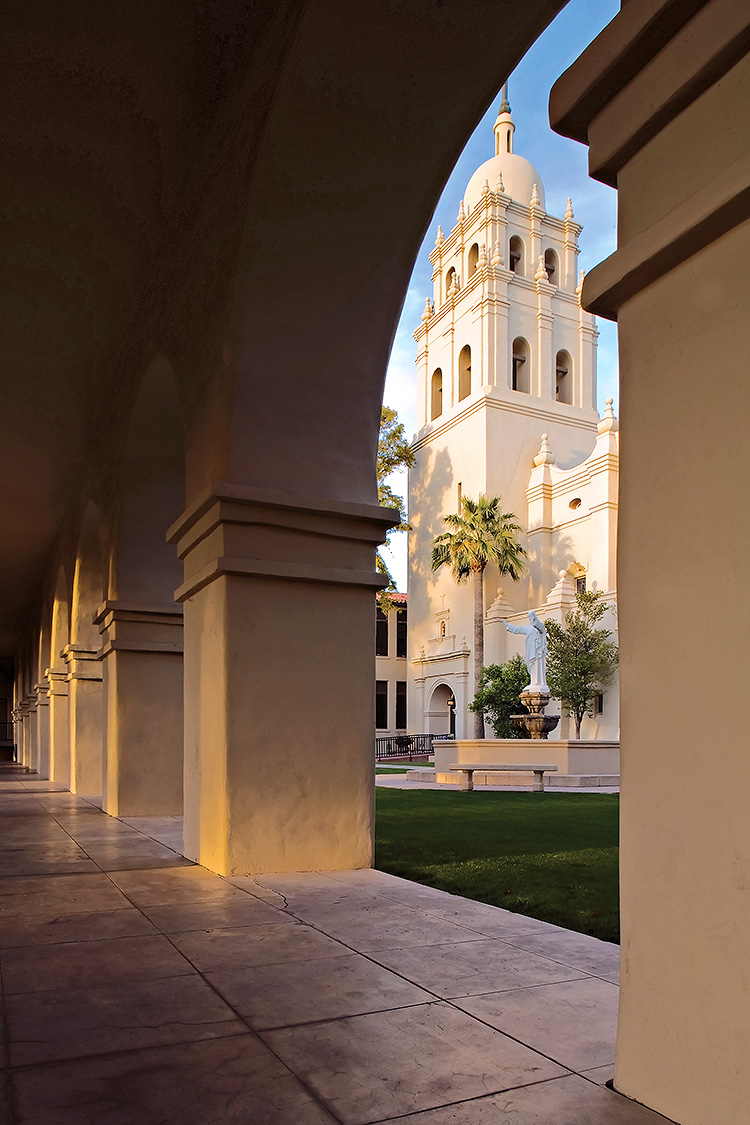
I hammered repeatedly on this third revival, partly because it often was badly and cheaply done, and also because it was a shameless fantasy: It evoked a grand, luxurious life, in sprawling ranches on the Spanish frontier, that never existed here. I argued for an Arizona architecture that addressed modern realities, such as fiercely hot summers and precious water. Interestingly, this might well borrow some Mediterranean traditions, such as shaded interior courtyards instead of grassy yards. But this would mean a deeper change in living style — maybe something more than an Arizona newcomer would be willing to undertake.
On a late-fall day in 2018, I returned to the most carefully crafted Hispanic fantasy in Arizona, intentionally arriving in the early morning, before any of the shops opened, so I could contemplate it quietly, without crowds. Sedona’s Tlaquepaque is an arts and crafts shopping center first opened in 1973 and modeled on the artisanal village of San Pedro Tlaquepaque, near Guadalajara, Mexico. Realized by Abe Miller, a Nevada hotel and restaurant developer, its courtyards, fountains, loggias and antique wooden gates — most of the artifacts did indeed come from Mexico — work for the feel of an idealized Mexican village, one that never knew poverty or the mixed blessing of industrialization. I note also that it has aged with extraordinary grace: It seems far older than its 45 years, but not to its detriment. Miller wove the buildings around great riparian sycamores that had long existed on the site, and it now seems as though the architecture and forest are one inseparable entity — the inorganic bricks, stone and stucco having somehow merged with the authentic ancientness of the trees.
Tlaquepaque is unquestionably beautiful, and — I realize — the fact that it’s a romantic fantasy has no bearing on the way it makes us feel: serene, unhurried, connected to nature. And evoking the past isn’t only escapism. It’s also a way of establishing a continuum, a sense that human cultures are linked throughout our long history. Classical Roman architecture borrowed from Greek, the Italian Renaissance raided both, and in 1773, Tumacácori, far out on the Spanish frontier of North America, reached back to the Renaissance for the columns and pediment of its facade. The whole history of architecture teems with borrowings, adaptations and cross-pollination.
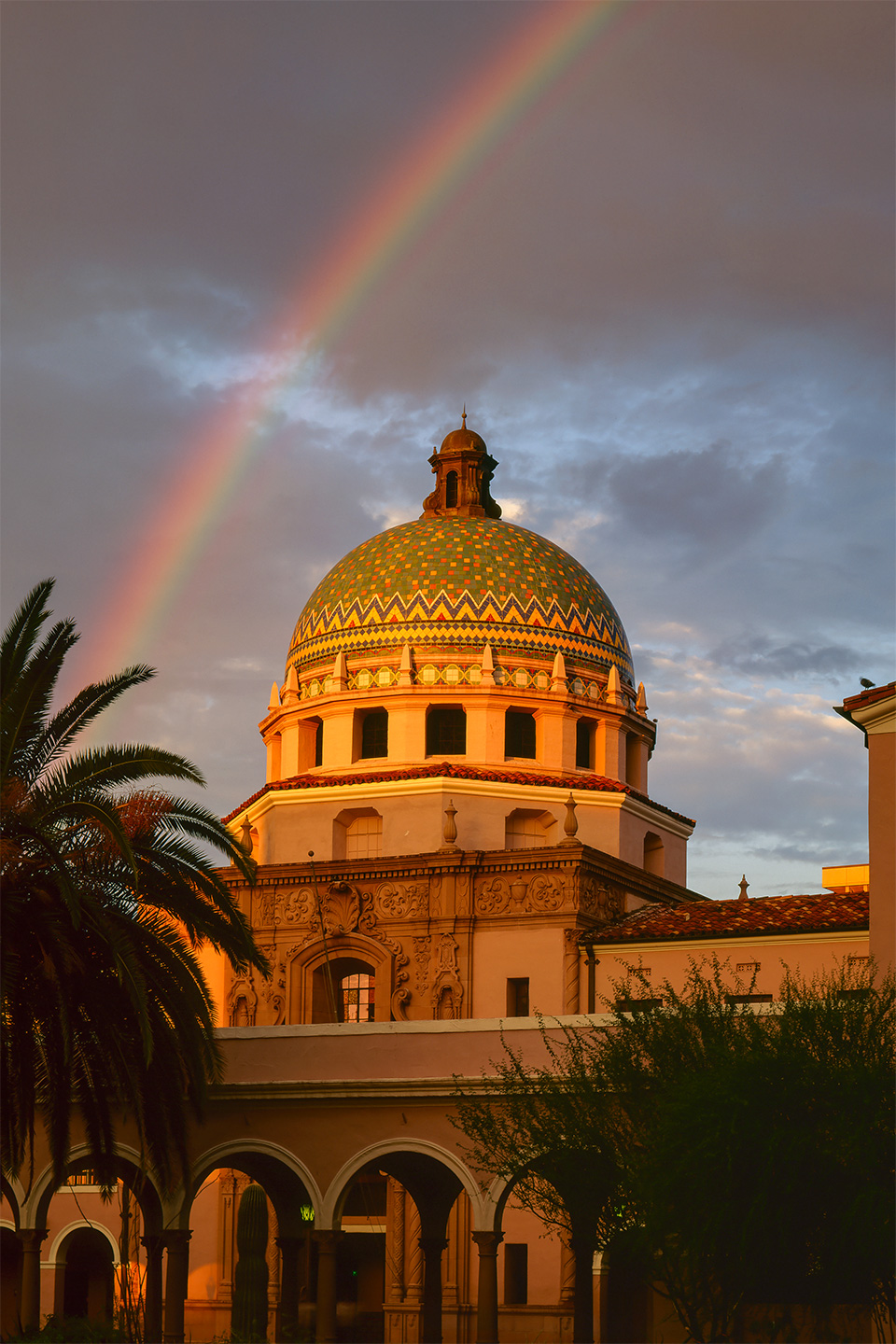
I recall another building I’ve always liked: a courtyard townhouse complex at 3310 E. Second Street in Tucson. Built in 1973, it presents a blank, sand-colored wall to the street, while behind it, a collection of knife-edged, angular rooflines elbow the sky. And there’s one picturesque detail: a noble but still slightly whimsical Mission Revival entryway grafted improbably onto this thoroughly modern profile. Architect Bill Hubartt once explained it to me as “a way to keep tabs on our history.” Like Tlaquepaque, it’s aged gracefully, and it now seems like a building — maybe the building — that perfectly captures the essence of the mélange that is 21st century Tucson.
In his 2006 book The Architecture of Happiness, the popular British philosopher Alain de Botton suggested that it is “architecture’s task to render vivid to us who we might ideally be.” That’s as beautiful a mission statement for architecture as has yet been written. Considering Arizona’s Spanish-accented architecture in its light, our ideal is to be a people uniquely respectful of all the roots that have taken hold in this land — Native American, Hispanic, Anglo-American and more. If we sometimes romanticize the reality, perhaps that’s one way of expressing the ideal.

